Forum Replies Created
-
AuthorReplies
-
04/15/2023 at 10:28 pm in reply to: Dec 6 Session: Dental Care Coordination for People with Developmental Disabilities #30048
Ingrid
MemberThrough this module, I now have a better understanding of some of the challenges experienced by special needs patients and their families, and as a result, where to direct our attention in alleviating the barriers they experience. Namely- finding a provider who is adequately trained to manage the multitude of challenges experienced by special needs populations: language and cultural barriers, physical limitations, psychosocial issues such as dental anxiety or past negative experiences, transportation challenges and office accessibility. Additionally, because there are so many other aspects of a special needs child’s life to manage, such as their education, the hopelessness and loneliness they often experience which can develop into depression, their relationship with other children their age… it can be hard to prioritize dental care. Some small steps I can take as a provider to make the dental appointment easier are to be extra communicative- to explain the appointment step by step to both the parent and child, to share resources and follow-up post-appointment, and to give verbal as well as written recommendations/instructions.
04/15/2023 at 10:07 pm in reply to: June Session: Evidence-Based Techniques for Oral Health Behavior and Oral Health Promotion for People with Developmental Disabilities #30047Ingrid
MemberThe most impactful part of “Evidence-Based Techniques for Oral Health Behavior and Oral Health Promotion for People with Developmental Disabilities” for me was listening to Sara’s part of the presentation. It was my first time hearing the experiences of a special needs patient in accessing dental care. Not only can regular dental appointments be difficult to tolerate for this patient population (due to discomfort, gag reflex, lack of provider knowledge and skills with behavioral management), many special needs patients are underserved because they lack insurance coverage and because the cost of dental care is inflated for them. It became apparent to me how inadequate the training dentists receive with treating diverse populations is- hopefully with these types of programs in place, we can work towards alleviating this inequity.
04/15/2023 at 9:43 pm in reply to: March 23, 2023: Medical Dental Integration for People with Developmental Disabilities #30046Ingrid
MemberThis webinar was incredibly eye opening- the most impactful part for me was hearing Keica, the self-advocate and community liaison at the UCLA UCEDD, speak about the PTSD she experienced with unpleasant dental care, and how she is able to receive dental treatment now (through nitrous oxide). I’m grateful to have heard from a first-person’s view the barriers which prevent those with developmental disabilities from obtaining dental care, as it compels me to push for change in reducing these barriers.
Medical-dental integration is essential and can be very helpful in treating special needs populations because it allows more efficient communication and understanding between medical and dental providers. From this webinar, I now know the following ways to advocate for medical-dental integration: to contact my local AAP chapter, to contact the UCSF Medical School and invite pediatric residents to shadow the dental clinics, and lastly to contact the local hospital and coordinate grand rounds on pediatric oral health.
-
AuthorReplies


